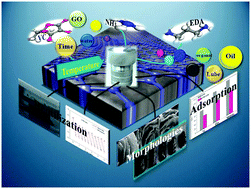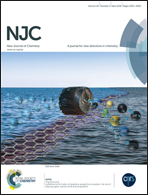Hydrothermal formation of graphene aerogel for oil sorption: the role of reducing agent, reaction time and temperature†
Abstract
Graphene aerogels (GAs) are widely studied in the oil contamination field in recent years. Among the preparation approaches, hydrothermal treatment employing a certain reducing agent has attracted much attention owing to the environmentally friendly and facile synthesis process. In this work, we systematically investigate the effects of various reducing agents including ammonia, ethanediamine (EDA) and vitamin C (VC) at different hydrothermal temperatures (80, 100, 120, 140, 160 and 180 °C) and reaction times (4, 8, 12, 16, 20 and 24 h) on the density, specific surface area (SSA), strength, morphology and adsorption performance of GAs. The results reveal that GAs reduced by VC possess the most outstanding performance for mechanical strength and re-utilization but have poor adsorption capacity (Qwt), whereas the sample obtained with ammonia exhibits the highest Qwt for both lube (160 g g−1) and n-hexane (105 g g−1). However, this sample not only reveals the worst mechanical strength which leads to a sharp decrease of the Qwt during the adsorption–squeezing experiments, but GA reduced by ammonia is also very sensitive to the reaction time and temperature. Therefore, EDA is a very promising reducing agent for the hydrothermal process as the resulting GA can maintain a high Qwt and reveals a wide hydrothermal preparation window.



 Please wait while we load your content...
Please wait while we load your content...